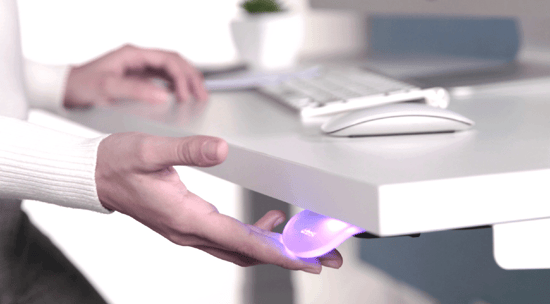Bridge Home
Bridge Home, a project where we help the homeless find temporary housing and change their lives forever.
The situation represented a challenge for us: to provide a second chance for those who do not have anything.
The people who benefited from this project showed us that we can all help realize the dream of many individuals who lived on the streets: to have a place to take refuge from the cold nights.
"The most important thing about this project was that, despite the challenges, we influenced and positively transformed the lives of vulnerable people, which is a great satisfaction for us as a company and human beings."
Boyardo Salmón, Gebesa VP
New horizons for the homeless
This story begins in April 2018, when Eric Garcetti, mayor of Los Angeles and the City Council, concerned about an emergency crisis in shelters, decided to take advantage of a law that would give hope to the homeless.
This new state law allowed them to build temporary shelters on any land owned or leased by the city.
Mayor Garcetti's A Bridge Home plan was intended to give homeless people in each neighborhood a refuge in the community they already know and love until they could be connected to a permanent home.
To achieve this, he acted as a mediator between the city, the county, and state partners, in order to increase funds for bridge home programs, facilitate their regulation, as well as ensure services.
What is a Bridge Home?
The Bridge Home program is a model of temporary housing that seeks to help the homeless rebuild their lives.
The time they can stay is based on their needs, whether they are women, men or seniors. A case manager supports them in bringing them to a more permanent solution.
In addition, these sites feature 24/7 security, mental health professionals and addiction specialists who help residents recover, stabilize their lives and stay off the streets.
How are sites chosen for temporary housing?
Each site is selected based on its proximity to the dense homeless camps. That is, they are designed to serve the homeless population living in that community and help clean up the neighborhood spaces.
So far, Mayor Garcetti has funded temporary bridge housing in all 15 Los Angeles Council Districts.
To help is to help ourselves
The mayor managed to get state grants and help cities throughout California find, build and expand housing for homeless populations.
"No one can do everything to solve homelessness, but, everyone can do something."
Eric Garcetti, Mayor of L.A.
A Bridge Home: Building Second Chances with Catalyst and Gebesa
Our participation was very significant and enriching, since our distributors in the United States, Catalyst presented the project to the AIP department, including the challenges it represented and how we worked on the solutions.
An extremely special project designed from the ground up. Working for 6 months between proposals, designs, and tests together with different departments: Design, Planning and Engineering; directed by Eric Bashaw, Yael Pelc, Felipe Rojas and Arturo Salais, great collaborators of Gebesa.
What was the challenge of this project?
The city of Los Angeles built a shelter, a safe environment where people could sleep, protect themselves from the cold and rain at night, have medical access and, at the same time, live with their pets.
To offer comfort to these people, the furniture solution had to meet certain criteria, such as adaptability, durability, and connectivity.
How do we participate in Bridge Home?
This project not only required a furnishing solution, but also creativity and empathy towards the homeless. We decided that the solution would be an innovative and multifunctional product: modules based on panel systems.

And so it was that in every detail of the design we put all our dedication so that it had the following characteristics:
- Easy to assemble: the panels can be installed in 3 easy steps and are reconfigurable for 1 or 2 users.
- Accessibility: compatible with ADA (accessibility for people with different abilities), e.g. wheelchairs.
- Acoustic insulation: the issue of soundproofing was relevant due to usage and privacy issues.
- Durability: the modules are highly resistant to weather and put up with rough use.
- Connectivity: they have convenient and secure USB inputs to connect smartphones or other devices.
We like to focus on people, our customers, and how we can solve their needs.
In addition to the required specifications, we added a bed and a hanging bookcase to offer storage in the module, because we wanted to make them feel like a real home.
While for the homeless, this project means a new opportunity to restart their lives, we have changed the landscape about the things we can change, through small actions.
Interested in making a difference? Learn how you can collaborate on impactful projects like this one and create opportunities for change. Explore our solutions.

.webp?width=352&name=evek-caso-de-exito-gebesa%20(1).webp)
